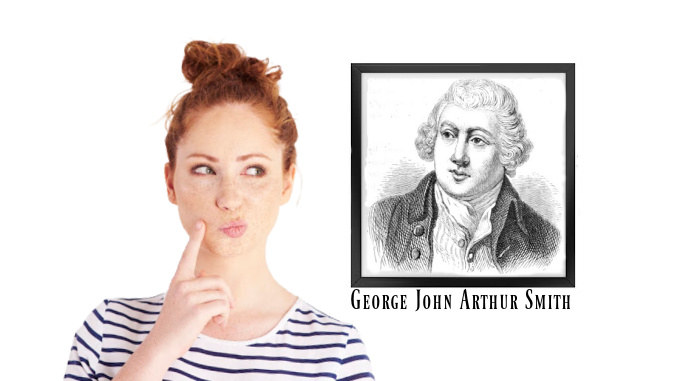
By James Pylant
Copyright © 2021 | Posted 11 March 2021
All Rights Reserved. Do not post or publish without written permission.
Return to Features
My late cousin, family genealogist Helen Ring Womack, once told me about her experience with a fellow researcher tracing the same lineage. His information for a late eighteenth-century family showed a middle name for each child. “Where did you find these middle names?” she asked, explaining that in her thorough research, she had never come across anything to indicate that these children had a second name. And that’s when he made a confession: “Well, I figured they must’ve had some middle name…so I made them up.”
Cousin Helen’s experience comes to mind every time I see an online family tree with middle names given for an English ancestor in the Colonial era of America. Yet rather than outright fabrications, oftentimes these second names derive from a researcher’s carelessly merging the identities of two entirely different people.
None of the 102 people on the passenger list of the Mayflower were recorded with a middle name. That’s because in England—outside of royalty and nobility—an infant was given one first name at baptism.1 “In early times the common law of England recognized only one Christian name and one family name,” said Elsdon C. Smith, the late names expert. “A middle name or initial was held to be immaterial and could be disregarded,” he added.2
“Middle names are a modern innovation,” observed The Vermont Record and Farmer in 1873. “Not one person in a hundred in New England a century ago had more than two names. Now eighty-four percent of the persons under twenty have three or more names.”3 In Pennsylvania, The Lancaster Examiner commented in 1859 that middle name were “almost unknown” a century earlier. “In an old Boston paper of Oct. 1759, the Transcript says out of 68 names of persons in the paper not one has a middle name.”4
The 1790 federal census also indicates that middle names—or even middle initials—were not commonly used by our ancestors when George Washington was the nation’s first president.5 Robert Treat Paine, Richard Henry Lee, and Francis Lightfoot Lee (all born in the 1730s) were the only “three-namers” among the 56 signers of the Declaration of Independence.
In Maryland in 1843, The Cecil Whig resurrected an editorial from The United States Gazette which found middle names pretentious—especially when used by politicians. “Middle names sink the candidate,” its editor opined, because “George Washington had no middle name to injure him.” John Quincy Adams and William Henry Harrison notwithstanding, parents should “beware how they jeopardize the chance of their offspring for the Presidential chair” by bestowing three names upon them.6
The Boston Transcript noted that as of 1800 few men had a middle name, but since then children were christened with up to four given names. In 1853, the newspaper reported:7
We have examined the list of names of the children in some of our public schools. The result of the inquiry was that of the American children, eighty-three percent, had more than one Christian name. Only seventeen children in a hundred had a single name. Twenty-one percent of these youths had three or more given names. The Irish population remain content with but one name.
“Females should have but one given name, and when they marry, should retain their maiden name as a middle name,” wrote the editor of The Buffalo Republic. “We should know at once, on seeing a lady’s name, whether she was married or single, and, if the former, what the name of her family was.” This practice, the editor asserted, would forever rid the world of “the whole brood of Emma Melvinas and Euphemia Helen Lauras, and a style of nomenclature which is thought by most persons to be ridiculous in the extreme.”8
Genealogists, though, are grateful for the Emma Melvinas and Euphemia Helen Lauras; their middle names help us to distinguish them from others with the same first and last name.
NOTES AND REFERENCES
- Honor W. W. Riter, “Parallels of History,” The Utah Genealogical and Historical Magazine, Vol. XIII (October 1922), no. 4, p. 168.
- Elsdon C. Smith, Treasury of Name Lore (New York: Harper & Rowe, Publishers, 1967), p. 107.
- “Gleanings,” The Vermont Record and Farmer (Brattleboro, Vt.), 4 April 1873, p. 6.
- The Lancaster Examiner (Lancaster, Penn.), 2 November 1859, p. 2.
- A Century of Population Growth: From the First Census of the United States to the Twelfth, 1790—1900 (Washington, D.C.: Government Printing Office, 1909), p. 115.
- “Small Matters,” The Cecil Whig (Elkton, Md.), 1 July 1843, p. 2, reprinting an article from The United States Gazette.
- The Staunton Spectator (Staunton, Va.), 23 March 1853, p. 1, quoting The Boston Transcript.
- The Perrysburg Journal, Perrysburg, Ohio, 17 February 1855, p. 3, reprinting from The Buffalo Republic.
